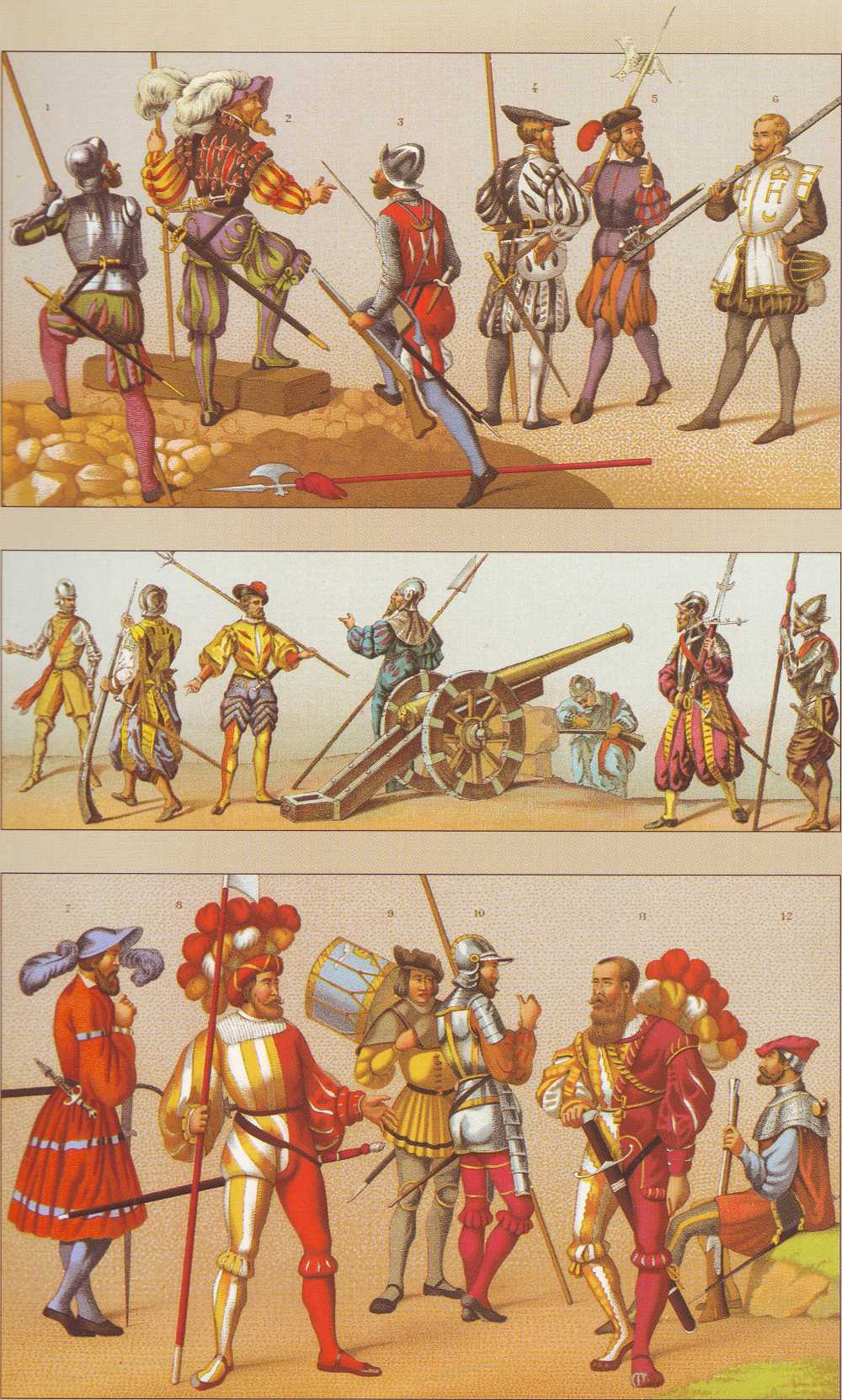
Shop Amazon - Create an Amazon Baby Registry
THE HISTORICAL ENCYCLOPEDIA OF COSTUME
ALBERT RACINET
THE CLASSIC WORK OF THE 19TH CENTURYp177-178

LOUIS XII INSPIRED A RADICAL CHANGE in French military tactics in the first quarter of the 16th century by encouraging the nobility to fight alongside the infantry. The necessity of such a change, and the effectiveness of massed infantry, had been made clear by the Swiss victories at Morat and Granson. Louis formed the Bandes de Piémont, an infantry force that was bolstered by auxiliaries, such as Swiss and Italian mercenaries and lancers.
Even this proved insufficient, however, and in 1523 he increased his infantry strength further by making the old-established francs-archers separate units within the general army's muster.
Previously, the army had been divided into seven legions, each containing 6,000 men. This structure was dissolved after the death of Francois I, to be replaced that of the bandes. Each bande was made up of two groups of pikemen, one group of halberdiers and one group of arquebusiers. With every bande there were four men known as payes royales - these were gentlemen of reduced means who were guaranteed an income for life by the king in return for service.
At this time, uniforms had not yet been standardized, though there was a movement towards this in crack units, such as the Swiss Guards and the Scottish Archers.
1.1 A pikeman in 1548, wearing the standard infantry helmet called a bourguingnotte; a light corselet made of small strips of flattened iron laid in overlapping scales, called a hallecret; rounded shoulder guards; armbands; mail gauntlets; a long sword and a dagger.
1.2 A Swiss captain. Swiss mercenaries had formed the backbone of the French army for many years, but could not always be relied on. The Swiss soldiers wore doublets and breeches that were slashed in an unusual manner, and, distinctively, hats decorated extravagantly with feathers.
1.3 An arquebusier of 1548. These soldiers were lightly clad, since they relied on pikemen for their protection. Here, the arquebusier is wearing a type of helmet known as a morion, a leather tunic and mail sleeves.
1.4 A member of the Swiss Guards, who traditionally marched in front of the king, protecting him with their halberds. In time of war they wore hallecrets, but in peacetime they sported a black and white livery, shown here, that was instituted by Henri II. The Guard's doublet and breeches are lined with silver taffeta, decorated with quarters of silver-coloured material and black velvet, and covered with slashes.
2.1, 2 & 5 An officer, an arquebusier and a halberdier from one of the many mercenary bands employed by France.
2.3 & 4 A Swiss artilleryman and a gunner. Louis XI first realized the importance of artillery, and it played an important role in the Italian campaigns.

3 A group of soldiers from the army of Francois I, thus part of the legionary structure that was abandoned later. 3.9 is a drummer; 3.10 a halberdier; and 3.12 is an arquebusier, wearing a iron skullcap, called a secrette, beneath his cap.